
Background information
HDMI 2.2 is coming – what you need to know
by Samuel Buchmann

CES brought a flood of monitor news. Here you will find a summary of the trends for this year and an overview of the new models from various manufacturers.
2025 will once again be dominated by OLED. While last year saw the dawn of a new technological era of high pixel density, progress this year is not quite as great. The two major panel manufacturers LG and Samsung are no longer marching in lockstep, but are instead focussing on two different directions. Time for an overview of the most exciting innovations.
Note: The first section is an outline of the technical basics. If you are not interested in the details or you already know your way around, you can scroll directly to the subtitle «More burn-in protection».
To help you better categorise monitors, here is an overview of current display technologies. They fall into five categories:
An overview of the advantages and disadvantages of LCD and OLED:
If you want to know more about the differences between the various technologies, I recommend this article on OLED vs. LCD and this article on WOLED vs. QD-OLED by colleague Luca Fontana.
The most important differences between the three types of LCD:
The most important differences between QD-OLED and WOLED:
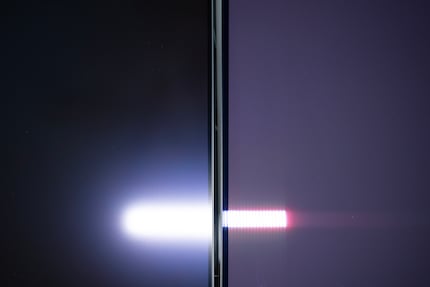
The advantages of OLED displays are becoming ever greater. As a result, OLED models are also appearing this year in the former LCD stronghold of office monitors. Since the optimised sub-pixel patterns text sharpness is no longer a problem. And the panels are even suitable for graphics and image editing because they almost completely cover the AdobeRGB colour space. In practice, this means the following in summary:
The biggest unknown with OLED monitors remains the risk of image retention («Burn-in»). It increases the warmer the panels get and the longer static content is displayed. Both are usually the case when working in brightly lit offices. However, previous tests with new OLED generations give hope, for example from «Rtings.com» or «Monitor Unboxed».
I too am currently putting an Asus PG32UCDM to an endurance test and working on it for at least eight hours a day - at full brightness and without dark mode. I reject the automatic suggestions for additional cleaning cycles every four hours. So I'm deliberately doing everything wrong. Nevertheless, after seven months I still haven't noticed any image retention at all. An initial conclusion will follow in the summer.
Manufacturers are continuously improving their protective measures against burn-in. At CES, several manufacturers presented new «OLED Care» features. These include AI-supported local adjustments of brightness in static image areas. The new QD OLED models from Asus also have a proximity sensor installed for the first time. It switches the picture to black when no one is sitting in front of the screen.
In addition to new screens, a new HDMI standard was also presented at CES. At 96 gigabits per second (Gbps), version 2.2 offers twice the bandwidth of the previous version 2.1, allowing you to transmit high resolutions at higher frame rates uncompressed via HDMI in future. For the foreseeable future, however, this will hardly bring any advantages and it will probably be years before HDMI 2.2 is widely used, which will reduce unnecessary static load.
DisplayPort 2.1 is already a reality. It can handle up to 80 Gbps, which is enough for uncompressed 4K at 240 hertz, for example. Until now, this option was just grey theory because there were no consumer graphics cards that supported the necessary transmission standard. This is now changing: Nvidia's new 50 series is the first to come with certification for DisplayPort UHBR20. The 9000 series from AMD is also rumoured.
This allows you to utilise the full potential of DisplayPort 2.1 for the first time. Monitors with the connection have been available since last year - and more and more manufacturers are integrating the connection into their devices in 2025. VESA also announced an update to the protocol at CES: DisplayPort 2.1b will support active cables up to three metres in length at full speed. Previously, you could only use this with very short cables.
Perhaps the most exciting new display this year comes from LG: a 45-inch WOLED panel with a resolution of 5120 × 2160 pixels («5K2K»). In purely technical terms, this is not a special achievement, as the pixel density of 125 pixels per inch (ppi) is nothing new. 32-inch 4K OLEDs with 140 ppi have been available since last year.
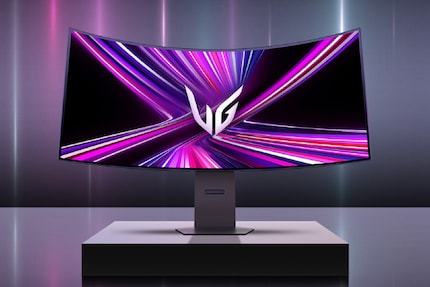
However, LG is the first manufacturer to scale a high OLED pixel density to such a large surface. The monitor could be a dream for high-end gaming - provided your graphics card is up to the task. The South Koreans are installing the panel in two different models. The UltraGear 45GX990A can be motorised and curved between flat and 900R. The probably cheaper 45GX950A has a fixed curvature of 900R. You can find more details here:
Unfortunately, the monster OLEDs are not cheap. The recommended retail price for the fixed-curvature 45GX950A in the USA is USD 1999. The 45GX990A is likely to be even more expensive. There are no exact details on availability yet, LG spoke to the portal «TFTCentral» about April 2025. The panel could also find its way into models from other manufacturers over the course of the year.
Technical advances in QD OLED technology are being made at Samsung. This year, 4th generation panels with 166 ppi pixel density are going into mass production. This means that 27-inch monitors with 4K resolution are possible for the first time, of which there were plenty on display at CES. They all have a frame rate of 240 hertz and only differ in terms of design and connections.
The models presented so far:
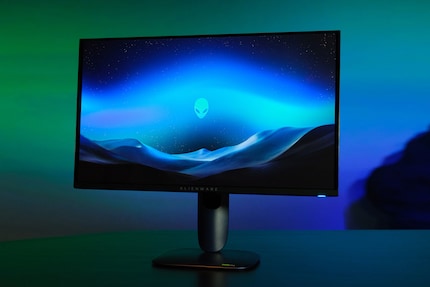
All of these monitors are flat and, with the exception of the Samsung Odyssey G81SF, come with a semi-glossy display. The Alienware AW2725Q costs 899 US dollars, the other manufacturers have not yet announced prices. Normally, Alienware is at the lower end of the scale, Samsung and MSI in the middle, Gigabyte and Asus at the upper end. All models are due to be released in the first quarter of 2025.
While LG has been offering a WOLED panel with 480 hertz since 2024, the maximum frame rate for Samsung's QD OLED was previously 360 hertz (to test the Odyssey G6). Samsung is now catching up or even slightly overtaking LG: the new fourth-generation QD OLED display with 2560 × 1440 pixels on 27 inches achieves 500 hertz.
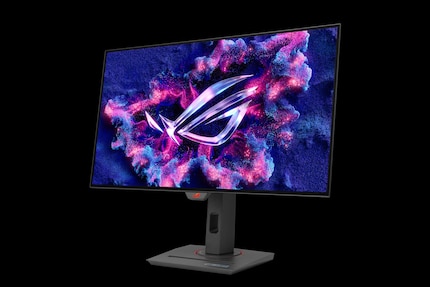
Such high refresh rates are particularly interesting for e-sports, where they ensure particularly clear images in motion. This can make a difference in competitive high-end shooters. Here are all models with Samsung's new 500 hertz panel:
Pricing information is not yet available. The 500 Hz monitors should be available in the second quarter of 2025.
As mentioned above, current OLED panels appear to be more resistant to burn-in than many had feared. Samsung and Dell have probably also come to this conclusion. Both brands are daring to pack the technology into an office monitor. At CES, they each presented a screen with a 32-inch QD OLED panel with 4K resolution:

The two models have a lower frame rate than their gaming brothers with 240 hertz, but have additional features. Dell packs 3D speakers with a total output of 25 watts into the chin of the S3225QC, announces it for the end of May 2025 and quotes a price of 799 US dollars. Samsung advertises the M90SF with smart TV functions and remains silent on price and availability.
In addition to its OLED models, Samsung also unveiled a new gaming monitor with an IPS panel in Las Vegas. The Odyssey G7 has a 40-inch diagonal with a 21:9 ratio and a 5K2K resolution (5120 × 2160 pixels). This corresponds to a pixel density of 140 ppi. You can imagine the format as if you were attaching additional screen area to the left and right of a 32-inch screen with 4K resolution.
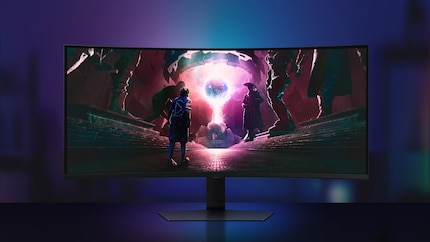
The frame rate of the Odyssey G7 is 180 hertz, the response time is 1 millisecond - both good values for an IPS panel, but below the level of OLED. On the other hand, the LED backlight should be brighter. Exact specifications are not yet available. However, the DisplayHDR 600 certification suggests that the monitor does not have Full Array Local Dimming. I therefore don't expect miracles in terms of picture quality. Price and start date: unknown.
A final small trend is LCD monitors with a particularly high pixel density. Acer is trying it out with a gaming model with «real» 5K resolution in a 16:9 aspect ratio (5120 × 2880 pixels, 183 ppi pixel density) at 144 hertz. This requires a graphics card to calculate 2.12 billion pixels per second - slightly more than for 4K at 240 hertz (1.99 billion).
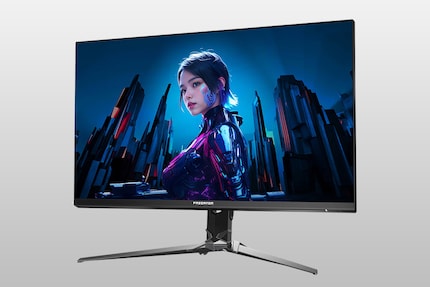
The manufacturer specifies a response time of 0.5 milliseconds for the 32-inch screen with IPS panel and a maximum brightness of 350 nits. The Acer Predator XB323QX is one of the first monitors with Nvidia Pulsar, which allows the simultaneous use of Black Frame Insertion (BFI) and Variable Frame Rate (VRR).
The models from LG and Asus have a completely different focus. They are primarily aimed at Mac users who want to run their operating system in native scaling. With their 6K resolutions (6,144 × 3,456 pixels for LG, 6016 × 3384 pixels for Asus) on 32 inches, the two displays position themselves as an alternative to the Apple Pro Display XDR.
The similarity cannot be overlooked, especially with the LG 32U990A, as the design is strongly reminiscent of that from Cupertino. Unfortunately, the frame rate of 60 hertz is also the same. And unlike Apple, neither LG nor Asus offer LED backlighting with local dimming. The picture quality is therefore unlikely to be at the same level as the Pro Display XDR. Depending on the price, the new 6K monitors could still be exciting.
There is still no official information about the future plans of the two display manufacturers LG and Samsung, but there is some speculation and logical conclusions. However, it is worth taking a look at the TV division of the two brands. In many respects, it is a harbinger of what we can expect later in monitors.
So this year, LG is once again saying goodbye to its microlens layer (MLA), which provided a higher light yield. Instead, «Tandem WOLED» is making its way into the latest televisions. LG itself has kept a low profile - but Panasonic, which sources its panels from LG, has readily revealed details. A version of the same technology is also used in the iPad Pro, which I have already been able to measure.
In short, Tandem WOLED is a massive step forward because it gets more luminosity out of the same energy. This enables brighter displays, better colours and a lower risk of burn-in. It is probably only a matter of time before the technology finds its way into monitors. Before then, however, LG is still expected to produce normal WOLED monitors with higher pixel densities:
Samsung also appears to be incorporating an additional luminous layer in the latest generation of QD OLED TVs, although official confirmation is still pending. This would mean that a panel would consist of a total of five layers - compared to four layers for tandem WOLED. In the end, both will probably be marketed under «Tandem OLED», as the properties are similar.
The effect for TVs with the new Samsung displays: they achieve a full screen of up to 390 nits - significantly more than current monitors (250 nits). Here, too, it is to be hoped that tandem QD OLED will make it into monitors in the next few years. The chances are good, as the margins of the smaller displays are higher, which makes them lucrative for manufacturers.
Little has happened in the LCD sector in recent years. However, the mass suitability of the OLED competition will increase the pressure on panel manufacturers. Higher frame rates in office monitors could be a welcome trend. Dell already has a model with 120 Hertz in its range with the UltraSharp U4025QW and presented two variants of it in 27 and 32 inches at CES. They also have a new generation of IPS black panel with a better contrast ratio of 3000:1.
My fingerprint often changes so drastically that my MacBook doesn't recognise it anymore. The reason? If I'm not clinging to a monitor or camera, I'm probably clinging to a rockface by the tips of my fingers.
Interesting facts about products, behind-the-scenes looks at manufacturers and deep-dives on interesting people.
Show all